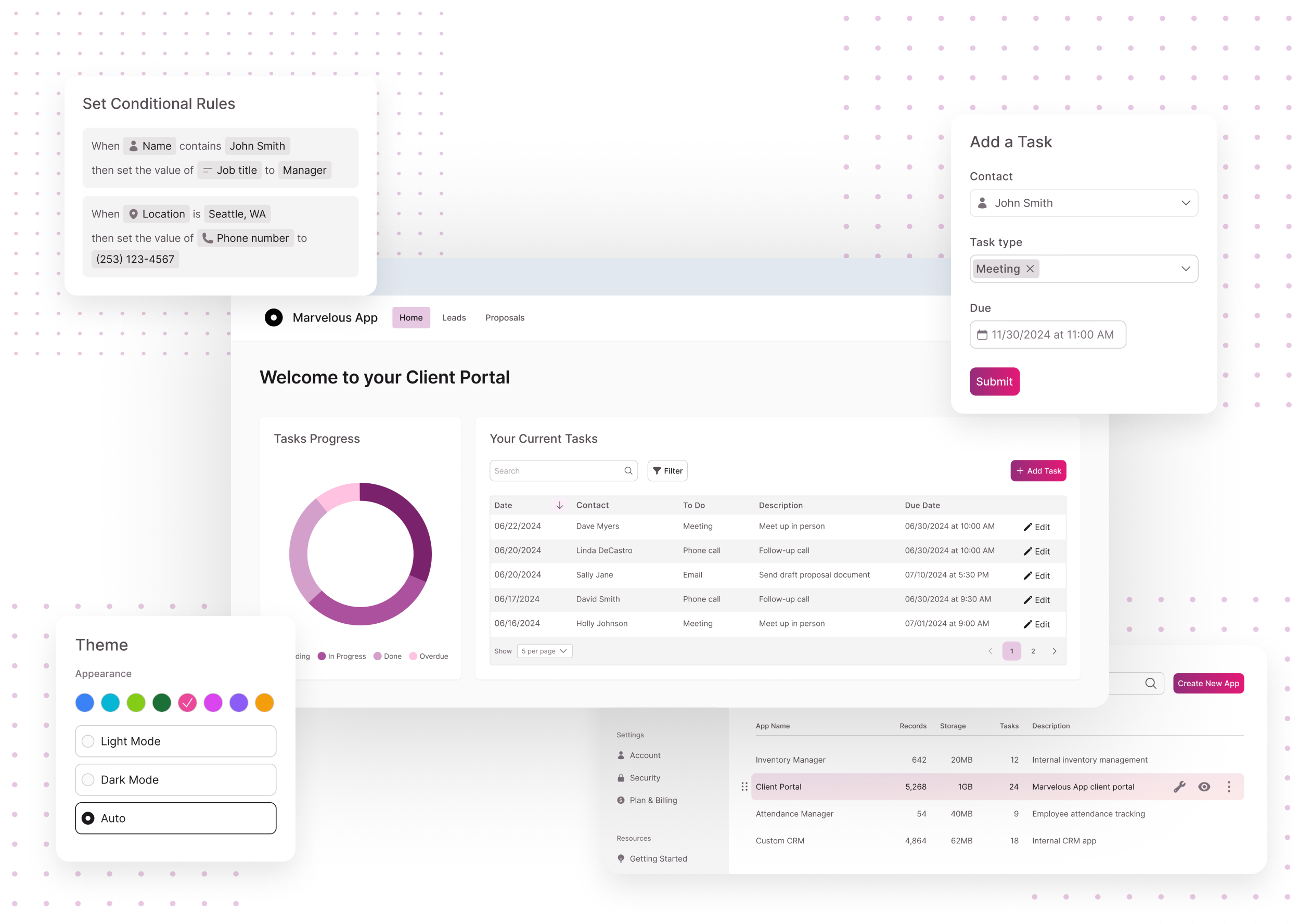Streamline Open Platform Database Development with No-Code Advancement Operatings Systems
Wiki Article
Discover Exactly How Scalable Data Sources Can Be Utilized Without Coding to Improve Your Company Operations
In today's busy company atmosphere, the ability to manage and evaluate data efficiently is vital. no-code. Scalable databases, particularly when combined with no-code remedies, use a transformative approach that encourages non-technical users to simplify procedures.Understanding Scalable Databases
Scalable databases are necessary for contemporary company operations, permitting organizations to successfully handle boosting quantities of data without giving up efficiency. These databases are developed to grow and adjust to the changing needs of a company, making sure that they can manage larger datasets and more complicated queries as business needs advance.Recognizing scalable data sources includes identifying their 2 key types: vertical scaling and horizontal scaling. Vertical scaling, or "scaling up," involves adding even more power (CPU, RAM) to an existing web server to improve performance. On the other hand, horizontal scaling, or "scaling out," requires adding more servers to distribute the tons, which typically causes better adaptability and mistake resistance.
Another important element is the design of scalable databases, which can be either relational or non-relational. Relational databases, such as MySQL and PostgreSQL, are structured and utilize SQL for questions, while non-relational data sources, like MongoDB and Cassandra, supply even more adaptability with unstructured information.
Inevitably, understanding scalable databases is vital for businesses aiming to take advantage of information as a strategic property, enabling them to remain competitive in a significantly data-driven atmosphere.

Advantages of No-Code Solutions
Unlocking the possibility of no-code solutions equips organizations to enhance procedures and improve performance without the need for extensive programming understanding. These systems allow non-technical users to produce, change, and take care of data sources easily, therefore democratizing accessibility to innovation throughout groups.Among the primary benefits of no-code remedies is their rate of application. Organizations can quickly deploy applications and automate procedures, considerably reducing the time invested in growth cycles. This agility allows organizations to respond without delay to market adjustments and consumer requirements, fostering a competitive edge.
Furthermore, no-code systems reduce dependence on IT divisions for daily jobs, permitting technical teams to concentrate on even more complex jobs that call for specialized abilities. This shift not just enhances resource appropriation but also promotes innovation within the company.
Cost-effectiveness is an additional advantage, as no-code solutions can reduce growth and upkeep expenses. By lessening the demand for coding competence, companies can harness the capacities of their existing workforce without the expenses of working with additional employees.
Popular No-Code Database Tools
The rise of no-code services has actually brought about the development of numerous data source tools that accommodate companies looking for performance and access. These devices empower customers with minimal technical competence to develop, handle, and adjust databases seamlessly.
Caspio sticks out for its ability to construct web applications with no coding. It enables services to develop robust databases and deploy applications rapidly, accommodating different industry needs. Propensity provides easy to use user interfaces and powerful information management capacities, allowing organizations to develop custom-made applications tailored to their process.

Use Situations in Service Procedures
Exactly how can services utilize database devices to enhance their operations? Scalable data sources offer companies with powerful capabilities to take care of and examine information without the requirement for considerable coding expertise. These devices can simplify numerous organization procedures, eventually causing enhanced effectiveness and efficiency.One popular usage instance is consumer relationship monitoring (CRM) Businesses can utilize scalable special info databases to track client communications, choices, and comments, making it possible for customized interaction and far better service. By streamlining this information, groups can team up better and reply to customer demands in real-time.
An additional substantial application is stock administration. Firms can employ no-code database tools to check supply levels, track deliveries, and projection demand. This ensures optimum supply levels, decreases waste, and reduces stockouts.
Furthermore, job management can gain from scalable data sources by permitting groups to take care of jobs, target dates, and sources in a merged system. With real-time updates and data visualization, task supervisors can make informed decisions.
Getting Going With Implementation
Implementing scalable databases in organization procedures needs a structured technique to ensure effective integration and usage. The very first step is to conduct a comprehensive needs assessment, identifying specific business needs, information types, and anticipated growth patterns. This fundamental understanding will certainly guide the option of the proper data source solution.Following, pick a straightforward, no-code database platform that lines up with your functional objectives. no-code. Numerous modern-day services provide intuitive interfaces, enabling non-technical users to manage data effectively. After selecting a system, develop a clear information design that outlines how data will be arranged, accessed, and kept
Training is critical; ensure that staff member are furnished with the essential skills to utilize the database. Think about supplying tutorials or workshops to familiarize personnel with the system's functionalities.
Conclusion
In conclusion, the assimilation of scalable databases via no-code options provides substantial benefits for company operations. Eventually, leveraging these modern technologies can lead to improved productivity and operational performance, positioning services for sustained growth in an affordable landscape.One popular no-code data source tool is Airtable, which combines the capability of a spread sheet with the power of a database.Exactly how can services websites leverage data source devices to enhance their procedures? Businesses can make use of scalable data sources to track client communications, preferences, and responses, allowing customized communication and much better solution.Implementing scalable databases in business operations requires a structured approach to ensure effective integration and utilization.In verdict, the integration of scalable databases via no-code services provides significant benefits for organization procedures.
Report this wiki page